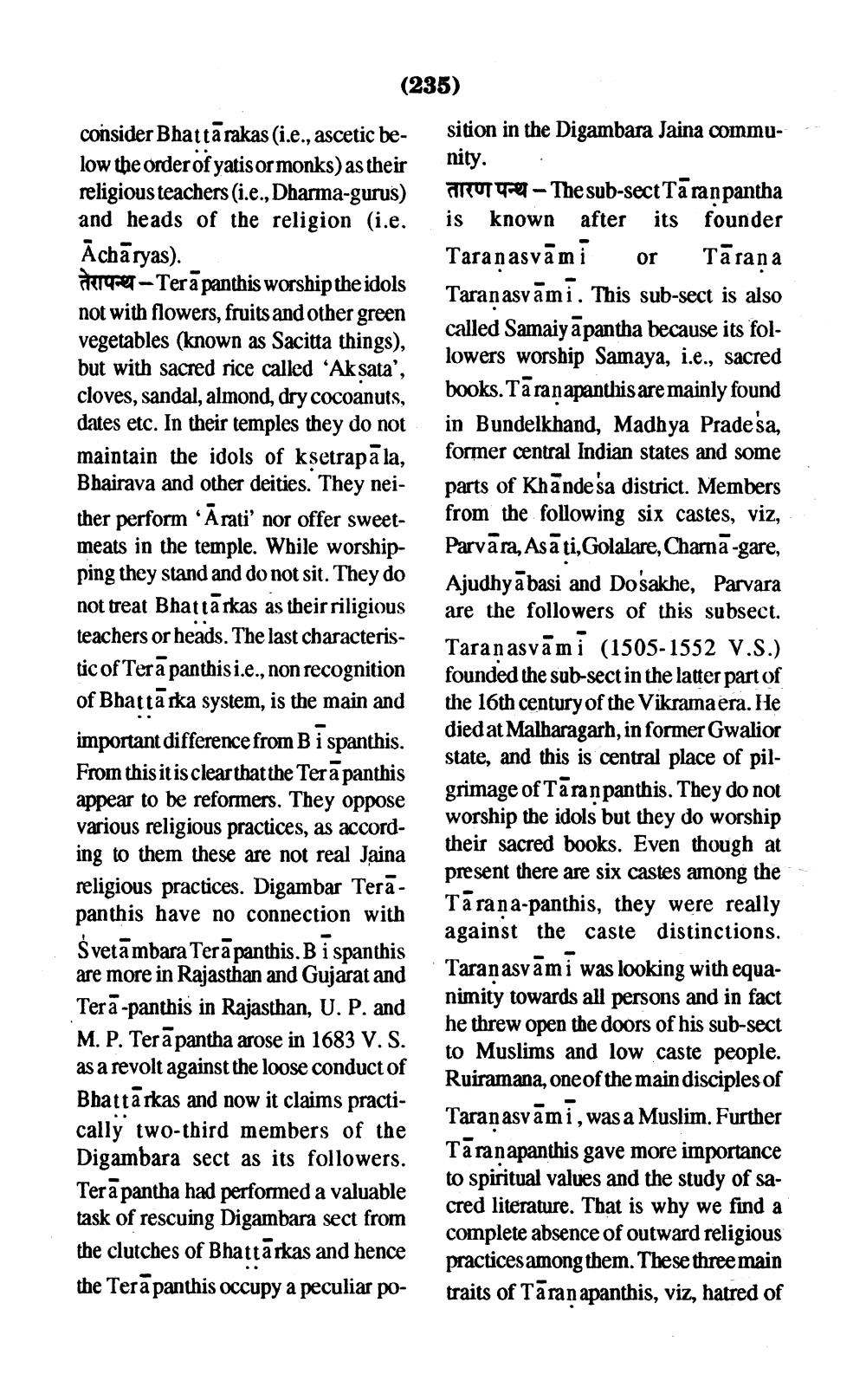________________
(235) consider Bhattā rakas (i.e., ascetic be- sition in the Digambara Jaina commulow the order of yatis or monks) as their mity. . religious teachers (i.e., Dharma-gurus) MITUTO - The sub-sectTā ran pantha and heads of the religion (i.e. is known after its founder Āchāryas)
Taranasvāmi or Tārana तेरापन्थ-Terapanthis worshipthe idols
Taranasvāmi. This sub-sect is also not with flowers, fruits and other green
called Samaiyāpantha because its folvegetables (known as Sacitta things), but with sacred rice called 'Ak sata',
lowers worship Samaya, i.e., sacred cloves, sandal, almond, dry cocoanuts,
books. Tāranapanthis are mainly found dates etc. In their temples they do not in Bundelkhand, Madhya Pradesa, maintain the idols of ksetrapā la, former central Indian states and some Bhairava and other deities. They nei- parts of Khānde sa district. Members ther perform “Ārati' nor offer sweet- from the following six castes, viz, meats in the temple. While worship Parvāra, Asā ti, Golalare, Chamā-gare, ping they stand and do not sit. They do
Ajudhyā basi and Dosakhe, Parvara not treat Bhattārkas as their riligious are the followers of this subsect. teachers or heads. The last characteris
Taranasvāmi (1505-1552 V.S.) tic of Terā panthisi.e., non recognition founded the sub-sect in the latter part of of Bhattā rka system, is the main and the 16th century of the Vikramaera. He important difference from B i spanthis.
died at Malharagarh, in former Gwalior
state, and this is central place of pilFrom this it is clearthat the Terā panthis appear to be reformers. They oppose
grimage of Tāran panthis. They do not various religious practices, as accord
worship the idols but they do worship ing to them these are not real Jaina
their sacred books. Even though at
present there are six castes among the religious practices. Digambar Terāpanthis have no connection with
Tā rana-panthis, they were really
against the caste distinctions. Svetāmbara Terapanthis. B i spanthis are more in Rajasthan and Gujarat and
Taranasvām i was looking with equaTerā-panthis in Rajasthan, U. P. and
nimity towards all persons and in fact
he threw open the doors of his sub-sect M. P. Terā pantha arose in 1683 V. S.
to Muslims and low caste people. as a revolt against the loose conduct of
Ruiramana, oneof the main disciples of Bhattārkas and now it claims practi
Taranasvāmi,was a Muslim. Further cally two-third members of the Digambara sect as its followers.
Tāranapanthis gave more importance
to spiritual values and the study of saTerā pantha had performed a valuable
cred literature. That is why we find a task of rescuing Digambara sect from
complete absence of outward religious the clutches of Bhattārkas and hence
practices among them. These three main the Terā panthis occupy a peculiar po- traits of Tāran apanthis, viz, hatred of




